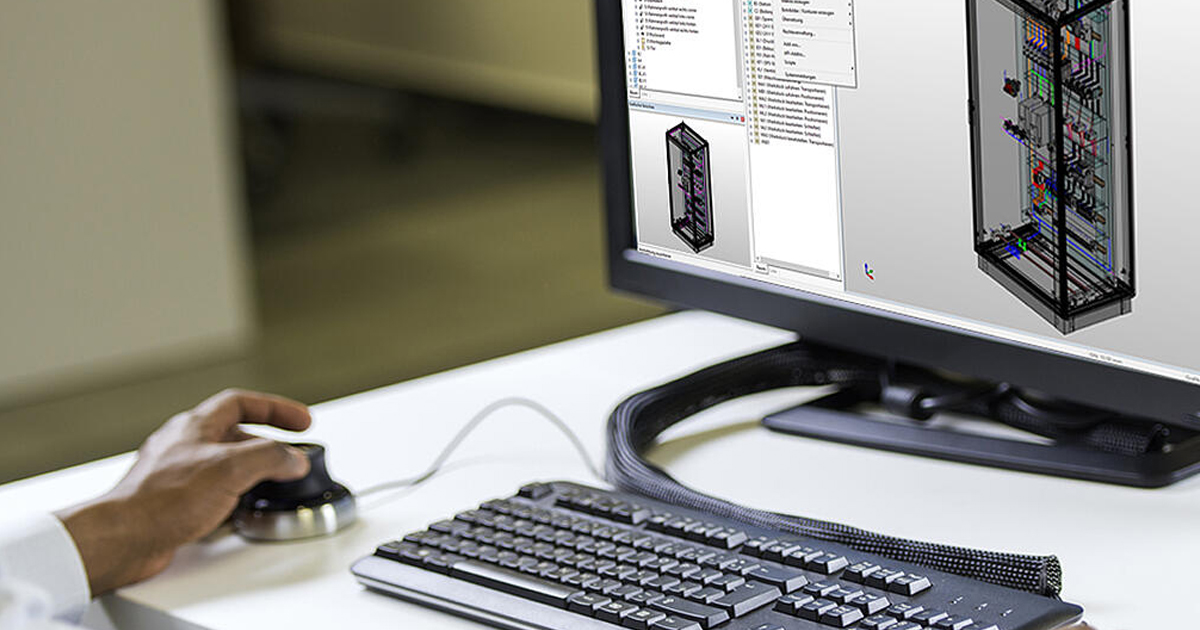Author
 Ian Greeves
Ian has been working at EPLAN UK for almost 3 years as an Applications Engineer. Ian has previously worked in the maintenance department and in the pre-production department, designing and building semi and fully automated machinery. He wants to use his engineering skills and expertise together with EPLAN to enable customers to simulate, validate and optimise their electrical design applications to achieve their goals
greeves.i@eplan.co.uk
Ian Greeves auf LinkedIn
Ian Greeves
Ian has been working at EPLAN UK for almost 3 years as an Applications Engineer. Ian has previously worked in the maintenance department and in the pre-production department, designing and building semi and fully automated machinery. He wants to use his engineering skills and expertise together with EPLAN to enable customers to simulate, validate and optimise their electrical design applications to achieve their goals
greeves.i@eplan.co.uk
Ian Greeves auf LinkedIn
Is 3D design important for electrical engineering?
Enhanced Visualisation: 3D design tools provide electrical engineers with the ability to visualise complex components and entire systems in a realistic, three-dimensional space. This capability is crucial for understanding how different parts will interact, fit together, or potentially interfere with each other. It's invaluable in planning and optimising the layout of circuit boards, wiring harnesses, and other electrical assemblies, particularly in fields with intricate configurations such as telecommunications and high-tech machinery.
Technical Specifications: If your design department plans control cabinet layouts in 3D, the data from the engineering designs can serve as the technical specifications for production equipment. For instance, mounting plates can be drilled fully automatically, or cables routed in 3D can be cut-to-length and crimped. This reduces errors, and vastly reduces work times; making happy customers and increasing order capacity. Furthermore, with 3D designs, it's easier to identify and correct design flaws early in the development process. As a result, time can be cut down, as well as resource expenditure.
Streamlined Collaboration: 3D models are not confined to individual workstations; they can be shared seamlessly across global teams. This fosters a collaborative environment where design teams, including those working remotely, can view, annotate, and modify the same model in real-time. Such collaboration is crucial when integrating the work of teams focusing on different aspects, such as mechanical design, electrical layout, and user interface.
3D Electrical Design makes production simpler: 3D design streamlines electrical engineering processes, particularly in panel assembly and production management. With its ability to easily generate manufacturing drawings and cutting lists for cable ducts, 3D design enhances control panel assembly. It utilises 3D routing to accurately determine cable lengths and supports the use of advanced equipment for component labeling and automatic crimping.
Furthermore, 3D models provide guides for cabling and component placement, ensuring precision and efficiency. These models supply comprehensive lists and instructions that feed directly into automated panel production systems. They also facilitate seamless data transfer to manufacturing machines for automated cabinet modifications and enable the automatic cutting, crimping, and bundling of cables. This integration of 3D data with production machinery has impact revolutionises the entire manufacturing workflow, making the process more streamlined and reducing errors.
Complexity Management: Electrical engineering projects today can be highly complex, involving multiple, intricate layers and components. 3D electrical design allows engineers to effectively manage this complexity by enabling them to build and analyze layered information. These capabilities ensure that designs are robust, functional, error-free.
Documentation and Maintenance: Beyond the initial design and manufacturing phases, 3D design tools are invaluable for creating detailed documentation such as assembly instructions, part specifications, and maintenance manuals. Such comprehensive documentation is crucial for the ongoing maintenance and repair of electrical systems, ensuring longevity and reliability. It also aids in training, allowing new engineers and technicians to understand complex systems more quickly and thoroughly.
Innovation and Design Freedom: The use of 3D design technology in electrical engineering pushes the boundaries of innovation. Engineers are not limited by the constraints of traditional design methods and can explore more creative, effective solutions. This design freedom can lead to breakthroughs in technology and new applications, driving progress in various engineering fields.
In summary, 3D design in electrical engineering is not just a tool for visualisation—it's an integral part of the entire engineering process, from concept to production, through to maintenance and beyond. It facilitates precision, efficiency, and innovation, making it essential in the rapidly evolving landscape of technology.
At Eplan, we are dedicated to providing top-notch software, continuous updates, expert technical support, and cutting-edge features tailored to your business requirements. Our pricing structure reflects our commitment to excellence in delivering value to our customers.
At Eplan, we are committed to delivering high-quality software, ongoing updates, technical support, and innovative features to meet your business needs.



Comments